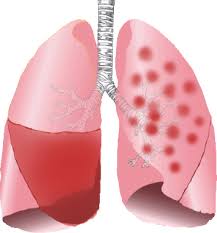
From paper by W. B. Hinsdale, M.D., Ann Arbor, Mich., in proceedings of the 43d Annual Session of the Homeopathic Medical Society of the State of Ohio, 1907.
The proper treatment of the primary disease, measles, whooping-cough, diphtheria, common cold or whatever it may be, is the great preventive. Of course, at the head of the list of remedies stands Antimonium tartaricum. Its great suggestive symptom is filling up of the chest with inability to clear it. The sub-crepitant rales become smothered by accumulations of phlegm which provoke choking fits and cyanosis, so frequently seen in the aged and in anaemic children. Such individuals are sensitive to cold and may be more or less nauseated. A young mother is now and then mistaken in her child’s symptoms. It has broncho-pneumonia, has been annoyed by a severe cough and has been rising sufficiently to admit of fairly good aeration in the lungs; but the cough stops abruptly and the child becomes drowsy. This stopping of the cough and stupidity she misconstrues as improvement.
The doctor comes. He observes the cyanosis that is coming on; that the breathing is shallower and more frequent; a pulse previously fast and weak is only a faint but very rapidcremor under his sensitive fingers. He notes at once the lungs are filling up, the blood distributed to the too cool body is becoming more and more impure at every flickering heart-beat; the sleep is only the coma indicative of poisoning of the crebral centres. In such a situation there are three things indicated, viz; Antimonium tartaricum, a steady nerve and persistent good care; these alone give the fighting chance.
My method of dispensing this remedy is to put a powder of the second or third decimal trituration in 3 ounces of water and to give a teaspoonful of the solution according to the condition of the patient.
It is not every case that becomes so much devitalized as those calling for Tartar emetic. Often-times the strength holds up fairly well and the cough is effective against the phlegm. Such have not suffered from depraved nutrition to begin with. They are worried down by the severity of the primary infection or have lapsed owing to indifference in treatment and care. They are not cachectic, only decidedly the worse for wear. Ipecac is many times their remedy. It has no antecedent dyscrasias. The rales are coarser than with Antimonum Tartaricum. The cough may be spasmodic but keeps the bronchial net-work reasonably clear of the loose mucus. If there be nausea, we have an additional link in the chain of Ipecac symptoms. Sambucus relieves spasmodic suffocative coughs, especially if the spasms are nocturnal. The cough is accompanied by rough sibilant wheezing and dyspnoea. It would seem to be indicated when the inflammation is just invading the pulmonary capillaries. My personal experience gives me great confidence in this remedy. I administer the tincture in water. Aquila, like Bryonia, has a cough with pleurisy-like pains in the side. There is dyspnoea, which, with the side-stitches, is developed by inspiration. Often indicated in the lingering and threatening bronchitis of measles, Lycopodium: In lingering and cases that do not tend to clear up, with a mucopurulent matter coughed up or, when in sub-acute cases there is fear of tuberculosis becoming en grafted, it is sometimes very effective. Sanguinaria should be also considered in such types, of course good old Bryonia has an invitation now and then to help us out, but the stages of this drug are usually passed before the real lobular invasion develops. The same is true of Ferrum Phosphoricum. But if a new lung territory becomes invaded it will probably be necessary to turn back to them. Phosphorus, which is so apt to have a “stage” in lobar pneumonia, may also be indicated by incessant cough, scanty secretion when the pulmonic atarrh is predominating over the bronchial. Percussion brings out the dull sound and inspection detects the shallow rapid breathing. The blood-streaded mucus which results from the stripping off of bronchial epithelium by severe cough is always inquired about, but this symptom that is not possible in those who do not expectorate is never obtainable in infants. It is possible for Arsenicum, Rhus and some of the other remedies that fringe on the border line of low fever and the typhoid state, which sometimes gets to be the condition in protracted cases in elderly people, to be indicated. Kali carbonicum is an old person’s remedy with its shivers and sticking pains through the chest.- It is one of the “old reliable.” I have sometimes referred to Kali carbonicum and Senega as “the old man’s bronchial friends.




